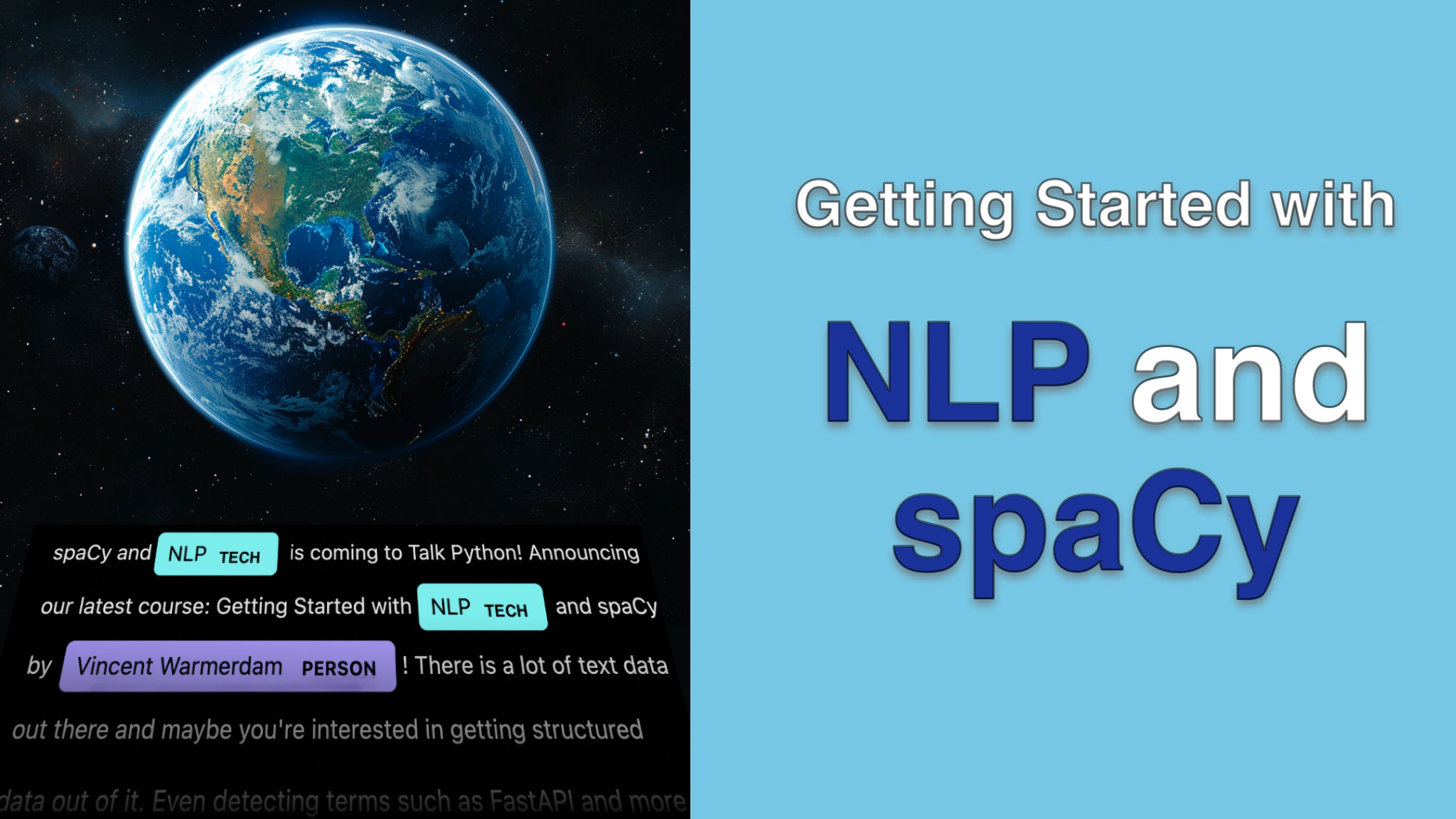Getting Started with NLP and spaCy Transcripts
Chapter: Part 4: NLP with huggingface and LLMs
Lecture: spaCy-LLM
Login or
purchase this course
to watch this video and the rest of the course contents.
0:00
Alright, so I'm back in my notebook and I've taken a couple of extra steps. First, I've installed some extra packages.
0:09
I've installed spaCyllm, which is the llm plugin, and I also installed this library called python.env.
0:16
The reason why I've installed this library is because I need some environment variables that have my OpenAI credentials,
0:23
and those are stored in this .env file. Now, the two variables that I've set there are the OpenAI API organization, which is my personal identifier,
0:34
and I have also set the OpenAI API key, which is my secret key. These are the two environment variables that I've declared in that particular file,
0:45
and these are the two environment variables that this llm provider needs. Besides this .env file though, there's also this other file here,
0:53
which is called spaCy-llm-config. Here's what it looks like. But in this particular case, this config file is somewhat limited.
1:02
We can see that there is this pipeline defined here, where there's only an llm component,
1:07
but inside that llm component we can see that there's a task definition and that there is a model definition.
1:14
This model definition over here contains everything that spaCy-llm needs to understand what backend to use.
1:21
There are lots of backends that are described on the documentation, but I'm using the gpd3-5 setting here, which is chat-gpt.
1:30
Then, for a task, I have a suite of tasks that I can pick from, and you can kind of look at this as a recipe that contains both the
1:40
prompt generator as well as the response translator. But in order to generate the prompt, the minimum thing that I would need
1:48
is I would need to know the names of the labels that I would have to predict. And that's something I'm able to define over here.
1:55
So, in layman's terms, this is all the configuration that you need to have a NER model that detects the dish, the ingredient, and the equipment.
2:06
And this configuration is something I can actually use to bootstrap a spaCy model.
2:11
To do that, there is this assemble function from the spaCy-llm-util library. I can point that to the config file.
2:21
And because I've loaded my keys by running this load.n function, that means that the keys in this file are now properly loaded,
2:30
then this NLP model, whenever it sees text, will do a call to OpenAI. When we send something to OpenAI, we send the prompt plus the text.
2:40
Then we get a response back. And then the text in that response, that is something that spaCy-llm can then use to construct a spaCy doc object.
2:50
And that's what we see happen here. As a user, it really feels like you're using spaCy as you would normally.
2:57
It's just that all of this in the background is abstracted away from you. But that is still definitely kind of a nice feature, I would say.
3:06
We are able to use big LLM models, and it still feels like we're just using spaCy.
